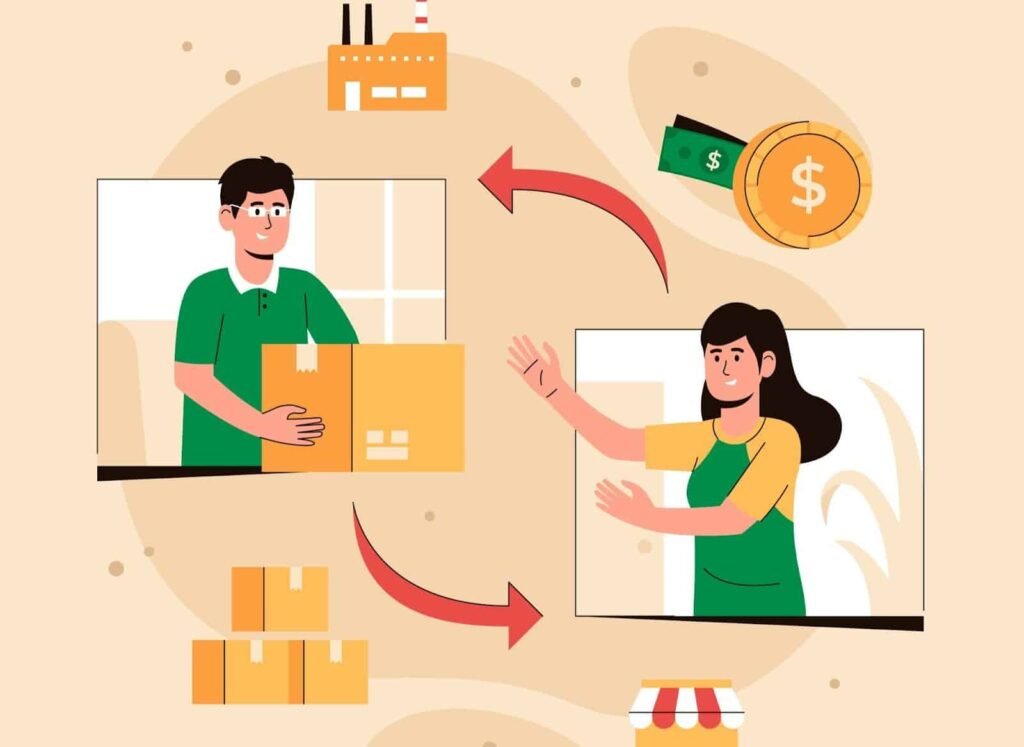
Feeling lost with dropshipping returns and refunds? Don’t worry! This guide has your back. We’ll guide you through each step, making things easy for both you and your customers. From knowing why a good return policy matters to setting up smooth procedures, we’ve got it all covered. So, let’s get started and learn how to handle returns and refunds like a pro!
Understanding the Importance of Returns and Refunds:
Before we dive into handling returns and refunds, let’s understand why they’re so important in dropshipping. Even if you work hard to offer great products and service, sometimes things go wrong and customers aren’t happy. Having a smooth returns and refunds system makes customers happier and builds trust and loyalty. These are crucial for success in dropshipping, where competition is tough. So, let’s dive in and demystify the process of processing dropshipping returns and refunds.

In addition, Read this blog as well: Dropshipping Home Depot to Amazon or eBay
Step 1: Setting Up a Clear Return Policy
The first thing you need to do is create a clear return policy. This policy tells your customers what they can expect if they want to return something they bought from your store. It should include things like when they can return items, why they can return them, and if there are any fees they need to pay.
Step 2: Providing Customer Support
Next, you need to make sure you offer good customer support. This means being available to help your customers with any questions they have about returning items. They should be able to contact you easily through email, phone, or chat, and you should respond to them quickly and politely.
Step 3: Initiating Return Requests
When a customer wants to return something, they need to start a return request. You can make this process easy for them by providing a simple form on your website where they can enter their order details and the reason they want to return the item.
Step 4: Authorizing Return Requests
Once you receive a return request, you need to check if it meets your return policy. If it does, you can give the customer the go-ahead to return the item. If it doesn’t, you’ll need to let the customer know why their return request was denied.
Step 5: Processing Return Shipments
After you’ve approved a return, you need to tell the customer how to send the item back to you. Make sure you provide them with clear instructions on how to package the item and what shipping method they should use. You’ll also need to give them your shipping address so they know where to send the item.
Moreover, To Read a complete guide on Packaging Cost, Click Here.
Step 6: Inspecting Returned Items
When the returned item arrives, you need to inspect it to make sure it’s in good condition. Check to see if it matches the description on your website and if there are any signs of damage or wear and tear. If everything looks good, you can move on to the next step.
Step 7: Issuing Refunds
Now it’s time to give the customer their money back. You’ll need to use the same payment method they used to buy the item to issue the refund. Make sure you let the customer know when the refund has been processed so they can keep an eye out for it in their bank account or on their credit card statement.

Step 8: Closing Return Requests
Finally, you need to mark the return request as closed in your system. This lets you keep track of which returns have been processed and which ones are still pending. You should also keep records of all returns for your own records in case you need to refer back to them in the future.
Conclusion:
Great job! You’ve learned how to handle dropshipping returns and refunds like a pro. By following these easy steps, you’ll make the process smooth for both you and your customers. Remember, giving excellent customer service builds trust and keeps people coming back.
If you want more details about Dropshipping, Visit our website: Easydropdeals.in
Are you ready to grow your dropshipping business even more? Click here for more helpful tips and tricks to succeed in e-commerce!




